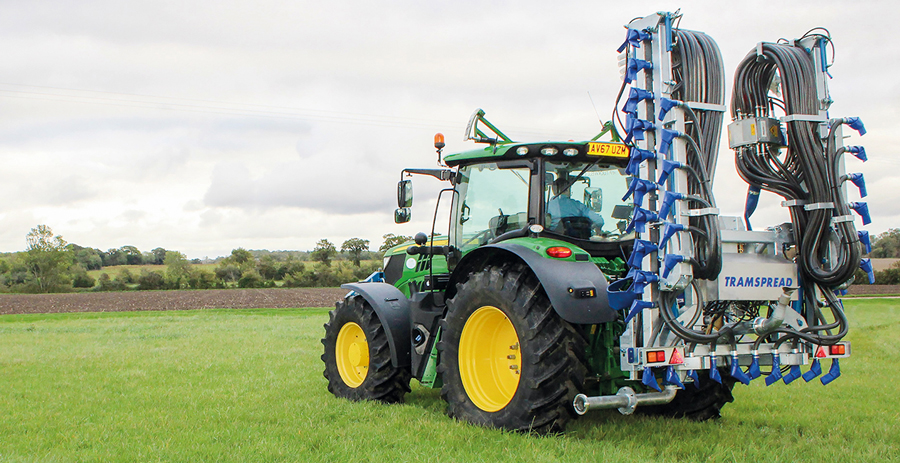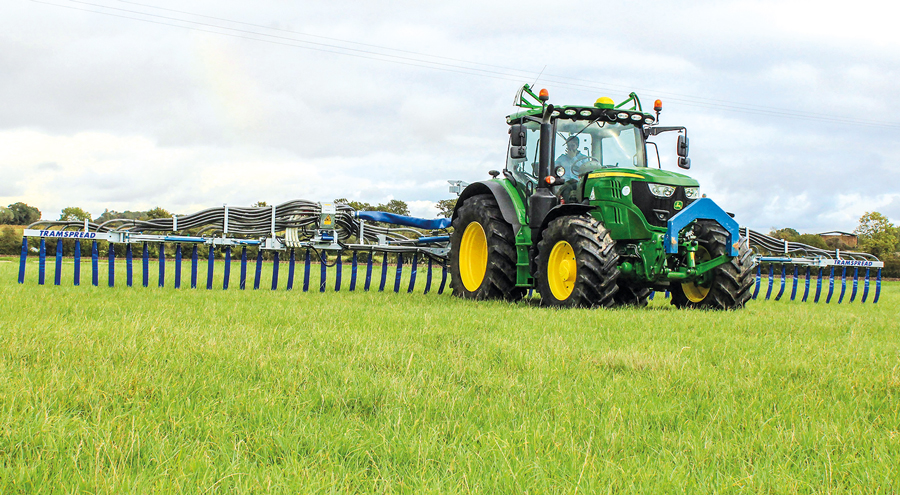New dribble bars available in eight widths to 24m
4th December 2020
Manufactured at a new facility in Suffolk, Tramspread has launched the new Suffolk range of dribble bars, ranging in width from 6–24m.
Boom widths from 6–15m fold vertically and feature automatic transport latches with safety lock. These can be fitted to tankers or tractors as umbilical applicators.
The 24m boom neatly and horizontally folds around the tractor’s cab without impairing the operator’s vision. “The low pro le does not block the view out of the rear of the tractor and the position of the swinging arm does not compromise the tractor’s pick-up hitch. This allows the tractor to tow a pump or reeler whilst the dribble bars are fitted,” explains Tramspread managing director, Terry Baker.
Dribble bars from 6–12m feature a single macerator and tractor spool valve controls. The 12m version is also available with twin macerators, which are fitted on the 15m and 24m models as standard. All twin macerator dribble bars benefit from electro-hydraulic folding mechanisms, with power beyond, operated from cab-mounted controls.
Left- and right-hand geometric control is standard on all twin macerator dribble bars, and allows for independent boom adjustment – a feature that will help those spreading on undulating land. “This feature enables the boom height to be adjusted for eld gradient and outcrops,” says Mr Baker.
The Suffolk range has pipework designed for ow meters and slurry monitors to be retro-fitted using the Tramspread Isobus Raven Box. “This transmits monitoring and mapping data to a monitor in the cab, which should encourage all users to test and measure slurry to make the most of its nutrients,” says Mr Baker. “We have focused on connectivity and automation for easy management and recording,” he adds.
All booms up to 15m are made of galvanised steel, whilst the larger 24m model has an aluminium construction. “The balance of strength and weight is important. Spreading umbilically is only better for the land if the weight of the dribble bar is not too high. We chose aluminium to reduce the weight, which will also reduce soil compaction,” concludes Mr Baker.

The booms fold vertically to reduce the transport width and allow access to the tractor hitch.


